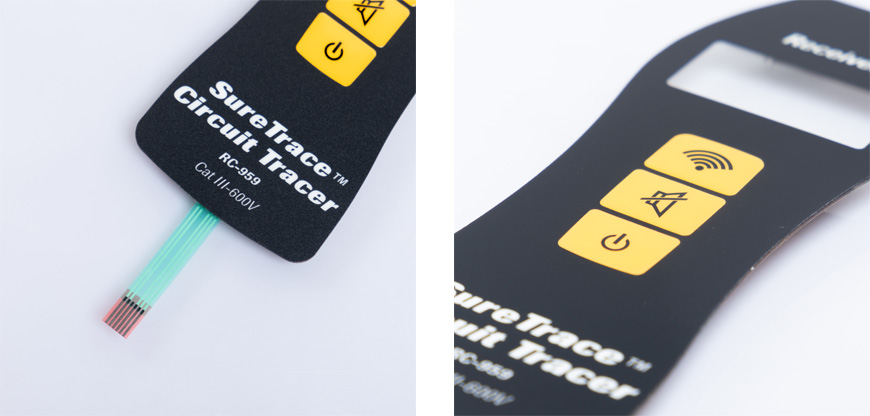
In the ever-evolving landscape of technology, the need for efficient and user-friendly interfaces is paramount. One such interface that has gained widespread recognition and utilization is the stock membrane switch. This article explores the various facets of stock membrane switches, from their construction and applications to their advantages and future prospects.

1. Introduction
2. What is a Membrane Switch?
3. The Construction of Stock Membrane Switches
4. Advantages of Using Stock Membrane Switches
5. Applications of Stock Membrane Switches
6. Customization Options
7. Durability and Longevity
8. Cost-Effectiveness
9. The Future of Stock Membrane Switches
10. How to Choose the Right Stock Membrane Switch
11. Maintenance and Care
12. Conclusion
13. FAQs
In the realm of modern electronics and technology, user-friendly interfaces play a pivotal role in ensuring seamless interactions between humans and machines. One such interface that has become increasingly popular in recent years is the stock membrane switch.
A membrane switch is a user interface that utilizes a thin, flexible piece of material, typically composed of layers of polyester or polycarbonate, as the primary switching component. These switches are known for their versatility and are employed in various electronic devices.
Stock membrane switches are pre-designed and readily available for use in a wide range of applications. They are typically composed of the following layers:
Graphic Overlay: The top layer, often made of polyester, serves as the user interface and displays the labels and graphics.
Spacer Layer: This layer provides the necessary separation between the graphic overlay and the circuits.
Circuit Layer: Consisting of conductive traces, this layer is responsible for registering the user's input.
Adhesive Layer: The bottom layer that attaches the membrane switch to the device's surface.
Stock membrane switches offer numerous advantages, including:
Cost-Effective: They are cost-effective solutions for various industries.
Customizability: They can be tailored to specific design and functionality requirements.
Durability: These switches are known for their resistance to wear and tear.
Compact Design: Their slim profile makes them suitable for space-constrained applications.
Stock membrane switches find applications in an array of industries, including:
Medical Devices: Used in equipment like blood analyzers and diagnostic tools.
Industrial Equipment: Employed in control panels for machinery and equipment.
Consumer Electronics: Found in household appliances and remote controls.
Aerospace and Automotive: Utilized in cockpit controls and vehicle dashboards.
While stock membrane switches are readily available, they can also be customized to match specific branding and functionality requirements. Companies can add unique graphics, colors, and tactile features to enhance the user experience.
One of the standout features of stock membrane switches is their durability. They are resistant to moisture, chemicals, and physical damage, ensuring a long lifespan even in harsh environments.
Given their affordability and longevity, stock membrane switches offer an excellent return on investment for businesses across various industries.
As technology continues to advance, the demand for intuitive user interfaces will persist. Stock membrane switches are likely to evolve further, incorporating advanced materials and touch-sensitive technology to meet the ever-increasing expectations of users.
When selecting a stock membrane switch for a particular application, it's crucial to consider factors such as size, tactile feedback, and the environment in which it will be used. Consulting with a membrane switch expert can help ensure the right choice.
Proper maintenance of stock membrane switches involves regular cleaning and avoiding exposure to extreme conditions. This ensures their continued reliability and performance.
In the world of modern technology, the stock membrane switch stands as a reliable and cost-effective solution for creating user-friendly interfaces in a wide range of applications. Its durability, customizability, and versatility make it a preferred choice for businesses seeking efficient and long-lasting interface solutions.
Are stock membrane switches waterproof?
Stock membrane switches are generally resistant to moisture, making them suitable for applications where exposure to liquids is a concern.
Can I get a stock membrane switch with custom graphics?
Yes, stock membrane switches can be customized with unique graphics and designs to match your branding.
What is the typical lifespan of a stock membrane switch?
When properly maintained, stock membrane switches can last for many years, even in demanding environments.
Are stock membrane switches compatible with touch-sensitive technology?
Yes, stock membrane switches can be integrated with touch-sensitive technology to provide a more interactive user experience.
How do I clean a stock membrane switch?
Cleaning a stock membrane switch is simple; use a soft cloth and a mild detergent to wipe the surface gently. Avoid using abrasive materials or harsh chemicals.